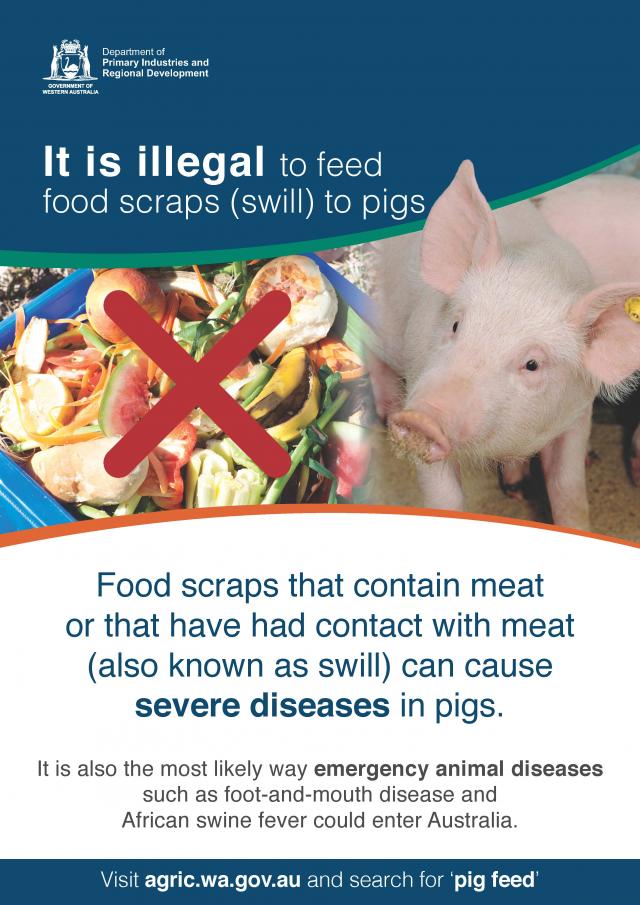| The WA Livestock Disease Outlook provides information about recent livestock disease cases in Western Australia and diseases likely to occur in the next month. Calling a vet to investigate diseases when they occur provides surveillance evidence to our markets that we are free of reportable and trade-relevant diseases. |
|
Recent livestock disease cases in WA
Private vet investigates illthrift and deaths in Merino ewes in the South-West
- Calling a private vet or your nearest DPIRD field vet to investigate significant disease in your livestock provides an answer about what caused the disease and allows correct management or treatment to prevent future outbreaks.
- Some disease investigations are subsidised by DPIRD where disease signs resemble a reportable disease, as ruling out these diseases supports our markets. See the DPIRD livestock surveillance incentives webpage for more information on the subsidies available to minimise veterinary costs.
- Last month, a producer reported 50 ewes from a flock of 2300 lambing ewes had been found down, weak or dead. The flock was on a nutritionally balanced diet and the only introduced animals were rams.
- The producer contacted their private vet, who visited the property for an on-farm investigation. The private vet examined two ewes which were weak, in poor body condition, and one had diarrhoea. Post-mortem of one ewe showed empty intestines, watery diarrhoea and enlarged lymph nodes. The private vet suspected ovine Johne’s disease (OJD), and sent samples to the DPIRD laboratory.
- The diagnosis of OJD was confirmed at the laboratory, and the private vet was then able to work with the producer to manage the disease in the flock. For more information, see the DPIRD webpage on OJD management options.
- Key points about OJD: OJD is caused by the bacterium Mycobacterium paratuberculosis. The bacterium infects sheep, goats and deer, and causes a fatal wasting disease. Sheep take a few years to show signs of disease infection.
- Key signs that may indicate OJD is present in your flock:
- illthrift in adult sheep that do not respond to feeding or treatment
- a 'tail' in adult mobs.
- Do not assume that illthrift is due to worms, mineral deficiencies or under-nutrition, especially if adequate nutrition has been provided.
- The biggest risk of introducing OJD into a flock is through the introduction of sheep (purchased, agisted or strays). For more information, see the DPIRD managing the risk of OJD webpage.
Reportable diseases ruled out in a flock of backyard chickens
- Anyone with poultry including chickens, ducks and turkeys should always report disease outbreaks in their flock to their private vet, their nearest DPIRD field vet, or the Emergency Animal Disease hotline on 1800 675 888.
- Last month, a backyard chicken owner reported that two adult Australorp hens had died from their flock of 30 in the Perth outskirts.
- The illness progressed over four days, with birds first showing lethargy, followed by discolouration of the combs, green diarrhoea and death. The owner submitted a dead chicken to DPIRD, where laboratory testing confirmed that the bird was egg-bound, and had died from a severe oviduct infection.
- As the disease signs shown by the birds were similar to those in birds affected by the reportable diseases avian influenza and Newcastle disease, DPIRD also tested for these diseases and was able to rule out their presence.
- As the case involved testing for reportable diseases, DPIRD paid the laboratory fees.
- If your poultry show any of these signs, call a vet: sudden death; swollen heads; dullness; reduced egg-laying; diarrhoea; discoloured wattles and combs; a droopy appearance; inability to walk or stand; unusual head or neck posture.
Private vet investigates abortion in Angus heifers in the Great Southern
- Investigating causes of abortion in cows supports Australia's export markets by testing for and ruling out reportable diseases. It also protects human health by testing for diseases that can be transmitted to people, such as leptospirosis.
- During September 15 of 30 heifers and 5 of 210 cows in an Angus herd failed to calve despite positive pregnancy testing.
- A private vet investigated and suspected early abortion, and sent blood samples to the DPIRD laboratory.
- Testing at DPIRD revealed the likely cause of the early abortions was bovine herpesvirus-1, which is known to cause abortions in cows if they are infected during pregnancy.
- Testing for other infectious causes of abortions including bovine brucellosis and leptospirosis was negative.
- In this case, a confirmed diagnosis allowed the private vet to work with the producer to make cost-effective decisions to minimise the risk of fertility and abortion issues in subsequent seasons.
- Always practise careful hygiene when handling materials from aborted and aborting animals as some diseases that cause abortions can be transmitted to people.
- See the DPIRD webpage on infertility and abortion in cows for more information.
- For more information about the subsidies available for livestock disease investigations, see the DPIRD webpage on surveillance incentives.
In spring, watch for these livestock diseases:
Disease | Typical history and signs |
Polioencephalomalacia (PEM) in sheep and cattle |
|
Worms in sheep and cattle
|
|

